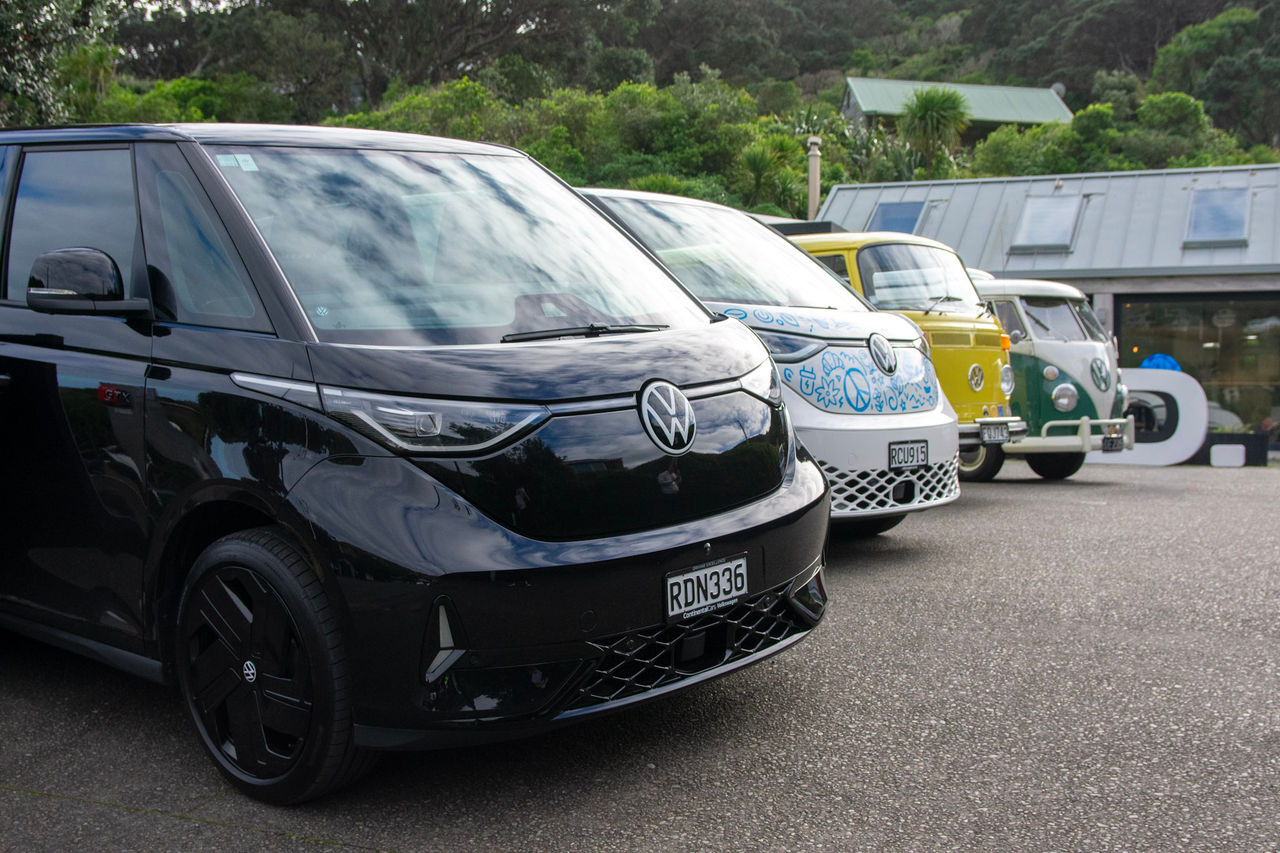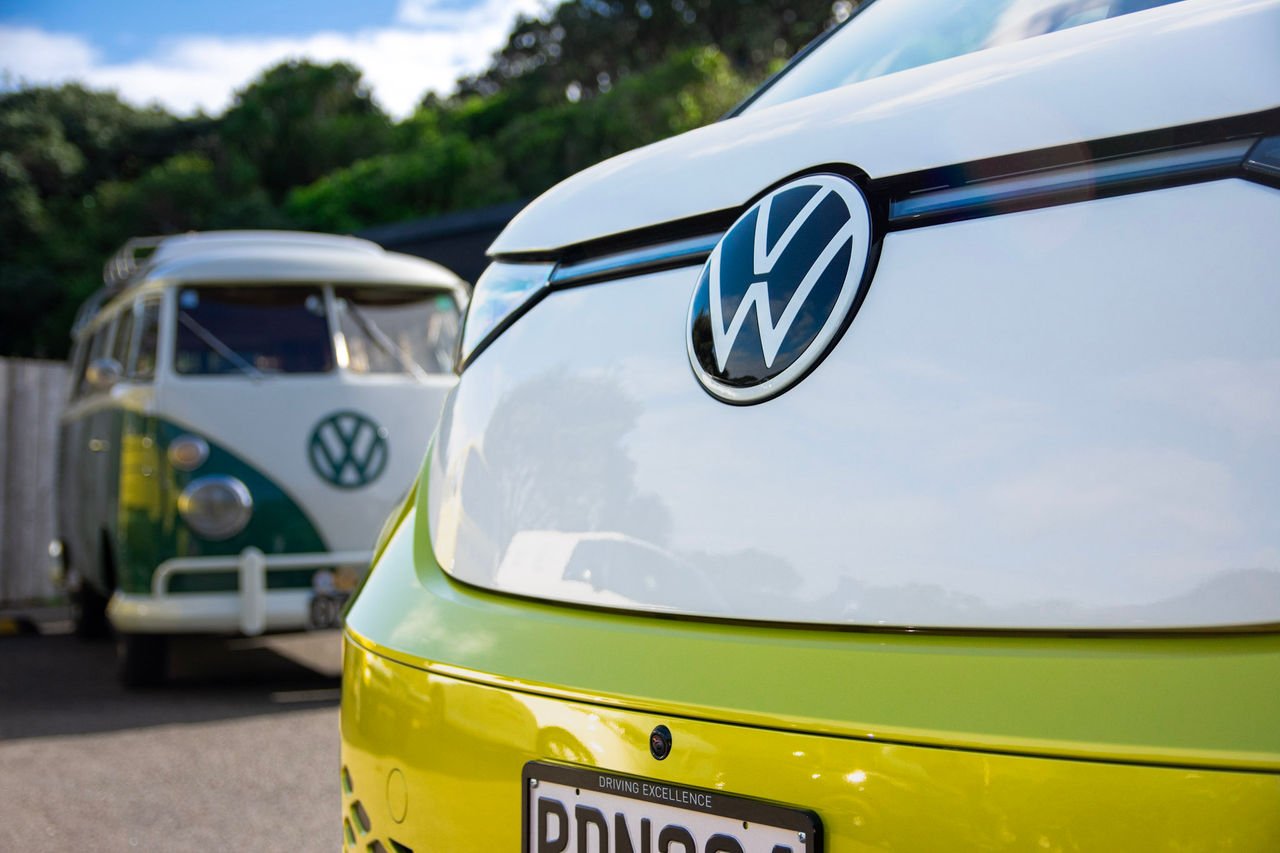
Mercedes-AMG GLC 63 Review
We test drive the Mercedes-AMG GLC 63 S E Performance Coupe on a trip between Napier and Auckland.
26 July 2025
The long-awaited van has finally arrived
There is a significant hum surrounding the launch of Volkswagen's ID. Buzz van, and for good reason. As the modern-day successor to the classic Kombi van, the ID. Buzz has some hefty expectations to meet in carrying on the legacy of the beloved T1 and T2 models, which have earned cult classic status over the years.
But the big question is, can the ID. Buzz live up to the same legendary status as its predecessors?
Volkswagen has made a dedicated effort to ensure that the ID. Buzz captures the same spirit and charm as the original Kombis. Embracing a nostalgic approach with the ID. Buzz styling, Volkswagen incorporated several iconic elements inspired by the original vans, such as the bubble-like shape, oversized badge, and distinctive external D-pillar vents, all of which pay homage to the classic Kombi heritage.
Volkswagen Commercial Vehicles New Zealand General Manager, Kevin Richards says, “The all-new ID. Buzz represents the evolution of a Volkswagen icon. It honours the spirit of the original Kombi, celebrating freedom and connection while stepping into a bold new era of sustainable mobility.”
The ID. Buzz is built on the same dependable MEB platform as the ID.4 and offers four variants to choose from: the base Pro model, which comes in both normal (NWB) and long wheelbase (LWB) options; the GTX, which is exclusively available in long wheelbase; and the Cargo, available only in normal wheelbase. Seat configurations vary from 2 to 3 in the Cargo and 5 or 7 in the Pro and GTX variants.

Prices start at $129,990 for the normal wheelbase (NWB) and $139,990 for the long wheelbase (LWB) passenger variants, and if you’re eyeing the flagship GTX, that will set you back at least $149,990. For those looking for a new work van, the Cargo model (available only in NWB) begins at $114,990. Although these prices are on the higher side, the availability of 7-seater electric vans is quite limited. The competition primarily includes the Mercedes-Benz EQV and Ford E-Transit, which fall within a similar market segment.
All variants are powered by a single 210kW motor that drives the rear wheels and generates an impressive 560Nm of torque. The GTX features an additional electric motor powering the front wheels, providing the van with 4Motion all-wheel drive and an overall output of 250kW. In terms of range, the short wheelbase Pro and Cargo variants have an indicated 382 km range, while the long wheelbase Pro and GTX, with additional batteries, extend that to 403 km and 396 km, respectively.
While dealerships will showcase a few examples, the sales model is primarily made-to-order, with Volkswagen highlighting customisation of wheelbase, seat layout, paint colours, and alloy wheels, allowing owners to tailor their vans to their preferences. This ethos of individuality and uniqueness echoes the spirit of the original Kombi, which was synonymous with the free-spirited, eccentric surfer lifestyle.
Standard features on the passenger variants include IQ. Matrix LED headlights, electric sliding doors that open by waving your foot underneath the door, and stylish alloy wheels - although the nostalgic two-tone colour scheme is an optional extra, except on the GTX.
The launch event took us to Piha, the symbolic ancestral home of the original Kombi, both known for their surfer and bohemian culture. I had the pleasure of driving the blacked-out GTX variant, equipped with striking black 21-inch wheels, distinctive black GTX styling, and an optional panoramic sunroof (reportedly the largest ever fitted to a Volkswagen) that can frost at the touch of a button.
The GTX is the obvious choice for the narrow, windy road over the Waitākere Ranges to Piha. The sports suspension and AWD helped keep the car firmly planted on the road and reduced body roll, but it is on the firmer side, meaning you felt every bump on the pockmarked road. Despite weighing in at 2,897kg, the GTX still provides enough low-end power to feel quick off the line.
After lunch, it was time to head back to Auckland, this time in the Cargo variant. The acceleration was both smooth and instant, with ample torque available from the get-go, giving the Cargo some impressive power despite its practical application. The ID. Buzz features a short overhang over the front and rear axles, which combined with its low centre of gravity makes the van feel flat and controlled on the road.
With room for two euro-sized pallets, a non-slip wooden floor, and a 707kg payload capacity, this model maximises space and utility. While the Cargo lacks the IQ. Matrix headlamps and alloy wheels as standard, it does include three seats, a cargo partition, App-Connect, and durable 18” steel wheels. The cabin has been fitted with durable, hard-plastic trims as well as multiple USB ports and a wireless phone charging dock.
Overall, the ID. Buzz is a modern example of a beloved classic while keeping the spirit of the original alive in the details. Whether you’re after the practicality of the Cargo, the luxury of the GTX, or anything in between, this line-up offers something for anyone wanting an electric van.
